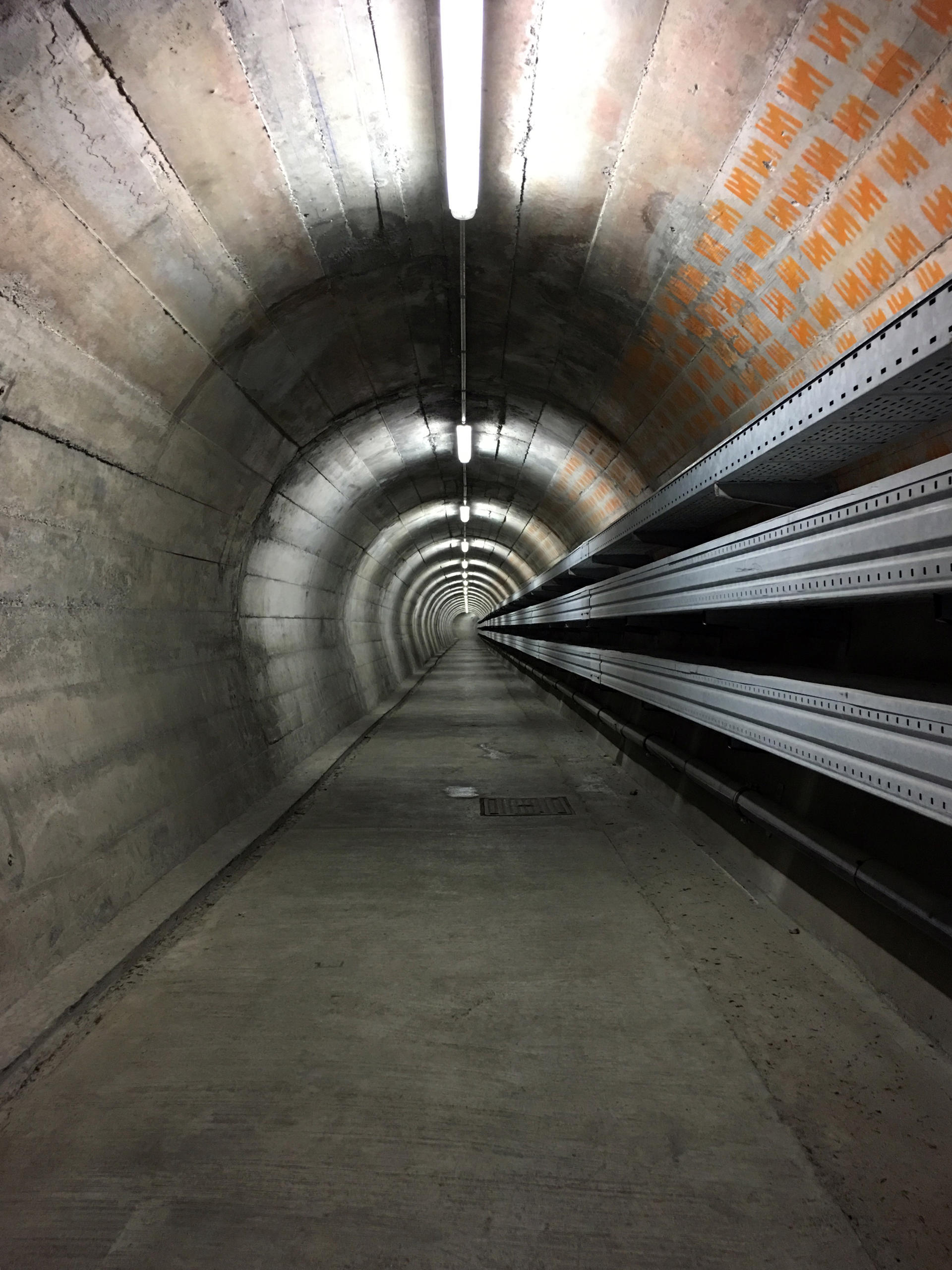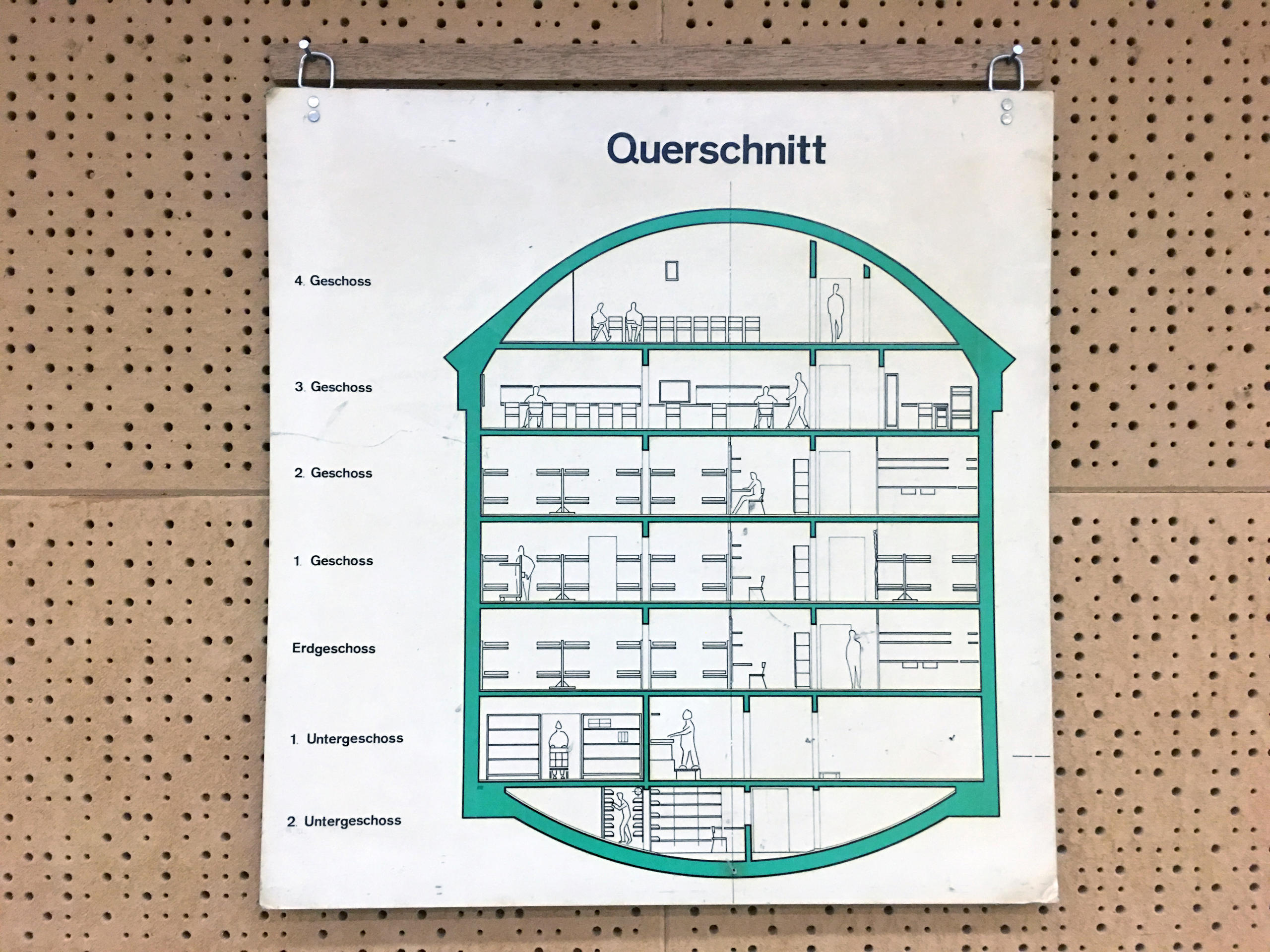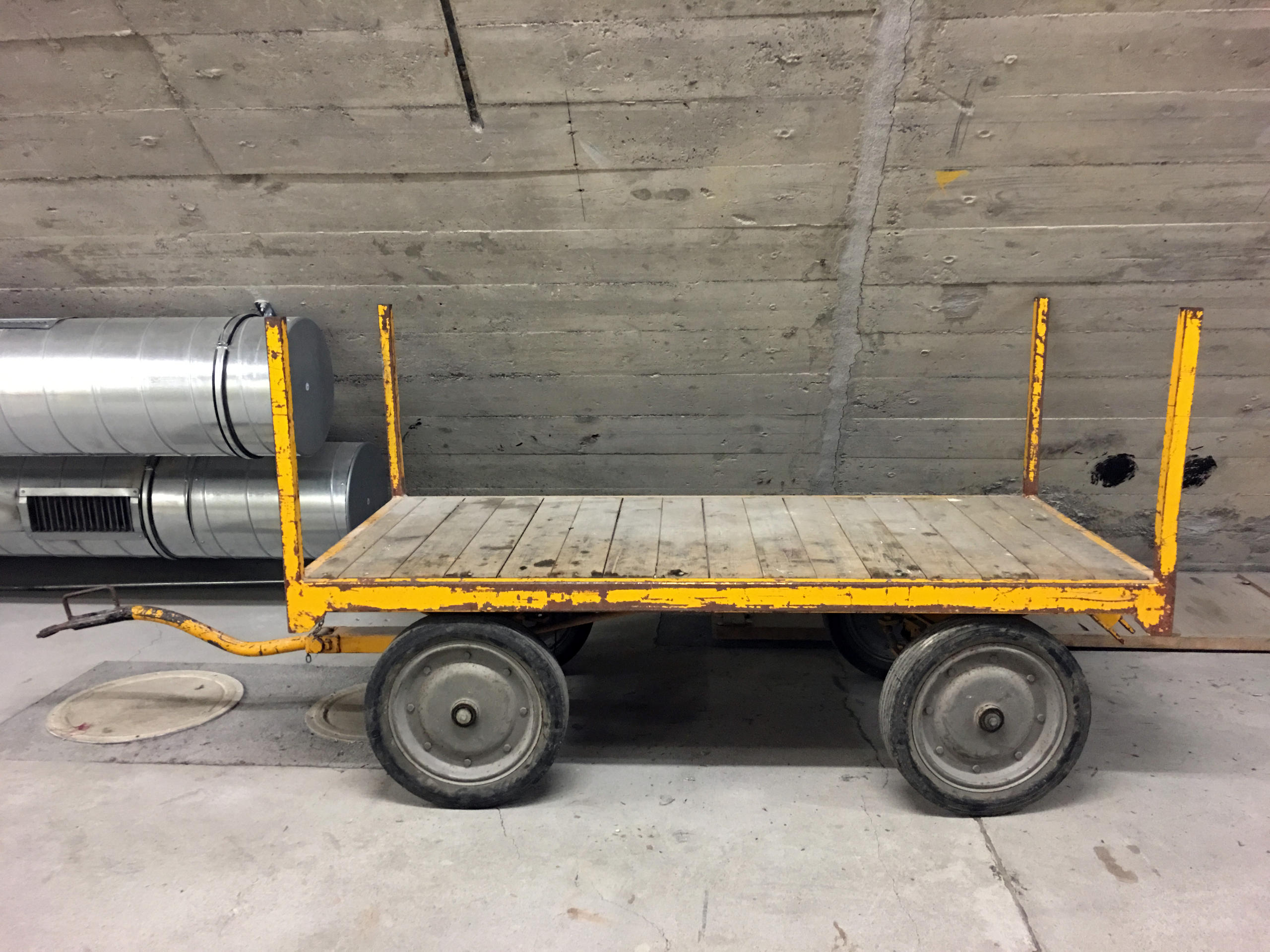
The forgotten underground world of Swiss bunkers

The Swiss city of Lucerne was once home to the biggest civilian bunker in the world. Built to shelter 20,000 people in the case of a nuclear attack and as part of Swiss policy to provide bunkers for all, it’s still primed for possible catastrophe.
Tucked in among blocks of flats, an unassuming door set in a wall of concrete peeks out from beneath a grassy mound next to a children’s playground. Behind this door stands 40 years of history, and a buried seven-storey building.
Zora Schelbert, my guide inside the bunker, pushes open the heavy door, and it slams behind us. It’s cold, and a long grey tunnel opens up in front, slowly sloping downwards.
It was the largest civilian shelter in the world at the time – opened in 1976 it was designed to keep 20,000 people safe in case of an atomic bomb.
Switzerland has had a unique ‘shelters for all’ policy since 1963, at the height of the Cold War. Every person in the country must have a spot in a bunker in case of some kind of catastrophe. Bunkers either have to be built underneath homes and blocks of flats, or the building owner has to pay the local authorities for a spot in a public shelter, like Sonnenberg.
The two Sonnenberg motorway tunnels (part of the A2) were built to be dual-purpose: one day they’d see traffic flowing through them, the next they could be shut off and then kitted out as emergency shelter for tens of thousands of people. Built around the tunnels was a seven-storey building, called ‘the cavern’. This would have been the logistical and technical command unit.

The ‘Erdgeschoss’ (ground floor) in this diagram refers to the level in the bunker where the motorway tunnels run through. Actual ground is above the ‘4. Geschoss’ (fourth floor).
“The bunker had three diesel generators to provide people with electricity, that was in the East wing [on the left],” explains Schelbert.
“The West wing is where 700 staff members would have worked – the security station for trouble makers from the tunnel and prison cells, an emergency hospital, kitchen, laundry, operations centre.”
In 2006 the bunker was downsized, but still exists as a civilian bunker to give shelter to 2,000 people, instead of the original number of 20,000.
Living underground
The bunker was split up into lots of different areas and rooms.
Take a look inside in this 360° video by clicking and dragging the screen or tilting your phone (open video in YouTubeExternal link app on mobile phones).
The living quarters would have been loud, intense and crowded, with no privacy.
“They were prepared for a lot, but I think in the end humans, mankind, would have been the problem,” said Schelbert.
To deal with some of the potential issues that may have arisen after packing tens of thousands of stressed-out people into a tiny space, prison cells were also installed.
The number of cells was increased after 2006 and used most recently as extra lock-up space by Lucerne police.
Disastrous flaws
Operation Ant was carried out in 1987. It was the first and only test of the original emergency scenario that would have seen the bunker come into play. Both motorway tunnels were closed for a whole week, while the living quarters and beds were set up inside one of them and all parts of the operation were put to the test.
“Wagons were the transportation means to take all of the beds down the ramps, but it was difficult to get down the narrow corridors,” explained Schelbert.

“Communication was hindered – there were no mobile phones and there was apparently no radio contact either. When they had to discuss things they had to always run up and down the tunnels.”
In the end only a quarter of the intended set-up could be completed.
Doors were 1.5 metres thick and weighed 350,000 kilograms. They were supposed to slide out in grooves and seal off the ends of the tunnels. Although officially this part of the test worked, Schelbert has met numerous people who were part of Operation Ant who say one of the doors wouldn’t close properly. “This would have been fatal.”
With the test taking place so soon after Chernobyl, people also realised that they would have needed the bunker to be ready much faster than it was.
A modern day scenario
Nowadays one person and two assistants look after the building. There are public monthly tours in EnglishExternal link, and different tours in German. The former emergency hospital area was closed after downsizing of the bunker in 2006, and is now part of the space that would be used to shelter civilians in case of emergency, instead of the traffic tunnels.
Would 2,000 people be able to live in the space now? “I still have my doubts,” said Schelbert.
“Now it’s easy to say: ‘there’s no way I would join them’, because I know the living conditions, but if worst came to worst maybe I would still end up in here. Let’s hope I never have to make that decision.”
“Let’s hope I never have to make that decision.”
The kind of disaster that would see people heading into their bunkers nowadays is slightly different from the idea when they were originally installed. “It would be natural catastrophes such as mud slides or earthquakes…nowadays we know in the case of nuclear catastrophe there’s no point in moving underground for a few weeks [as radiation lasts much longer].”
If there was a natural disaster on a huge scale, or a major incident at a nuclear power plant, Switzerland’s network of emergency sirens would go off, and people would then either turn on the radio or look at a Swiss emergency appExternal link (link in De/Fr/It).
Like many people in Switzerland, Schelbert doesn’t keep a stash of food ‘in case of emergency’ in her basement, even though in a bunker the responsibility is on each person to being their own food.
“I didn’t grow up with that threat, but I know some elderly people who went through all of that and they have their food stocks. They are always ready.”
In 2011 Parliament wanted to repeal the ‘shelters for all’ law as there’s not enough space to accommodate the entire population. But two days after the decision was taken, the Fukushima Tsunami and disaster in Japan occurred. The decision was reversed.
Do you keep supplies in case of emergency? Do you think it’s still worthwhile to keep emergency shelters? Let us know in the comments below or contact the author on FacebookExternal link or twitter @jofahy.External link

In compliance with the JTI standards
More: SWI swissinfo.ch certified by the Journalism Trust Initiative
































You can find an overview of ongoing debates with our journalists here . Please join us!
If you want to start a conversation about a topic raised in this article or want to report factual errors, email us at english@swissinfo.ch.